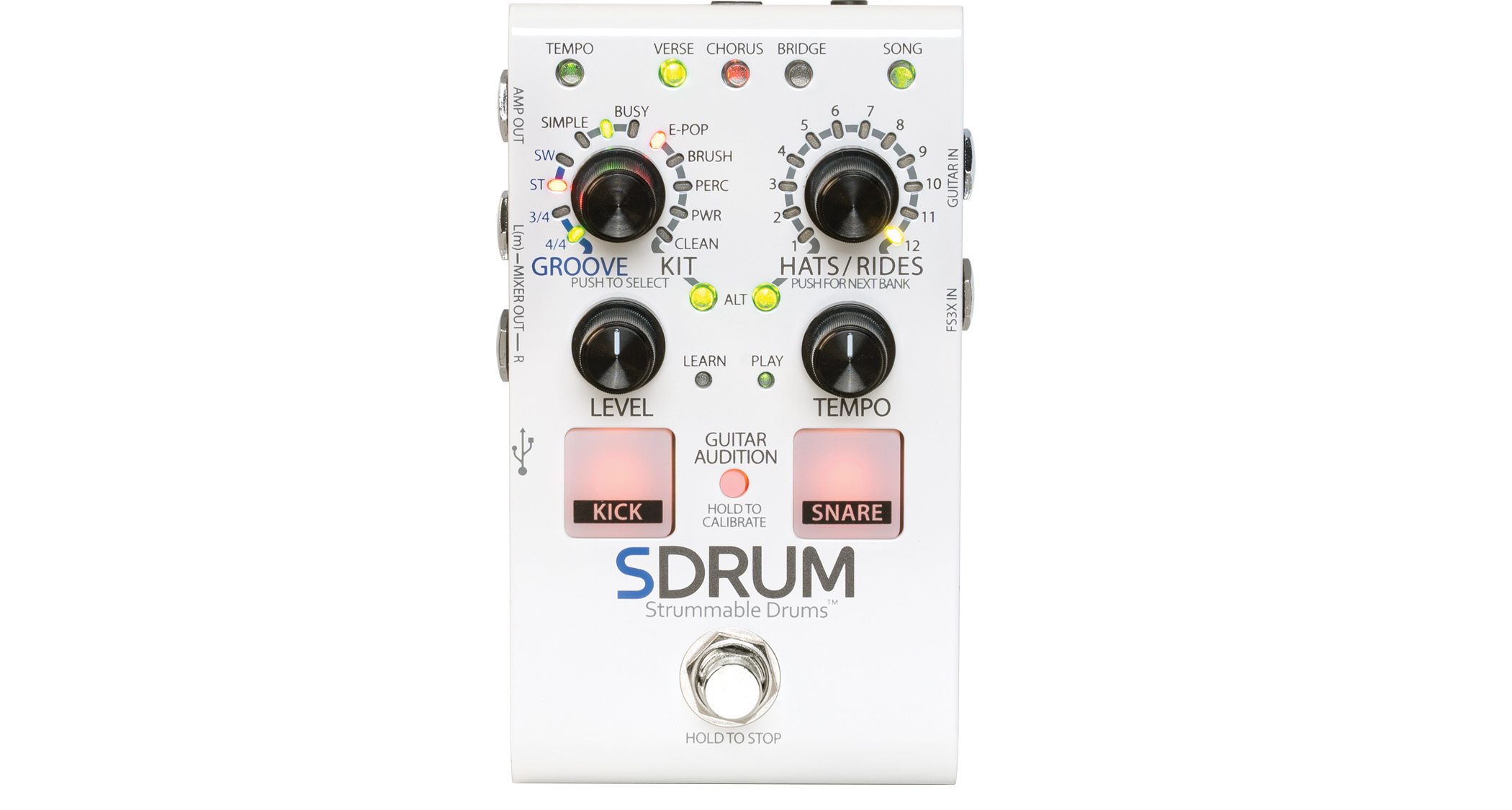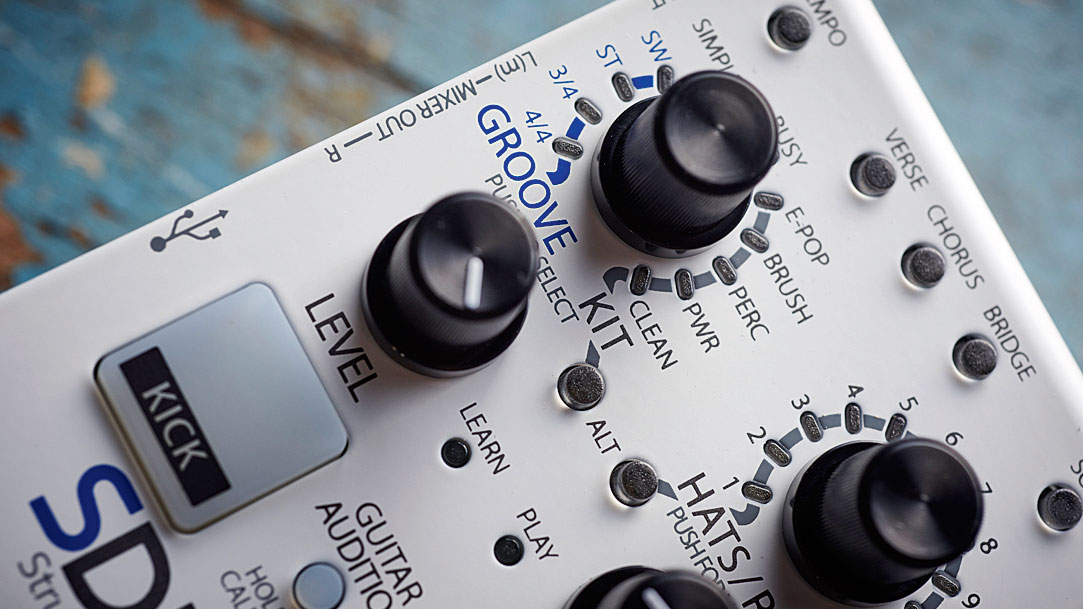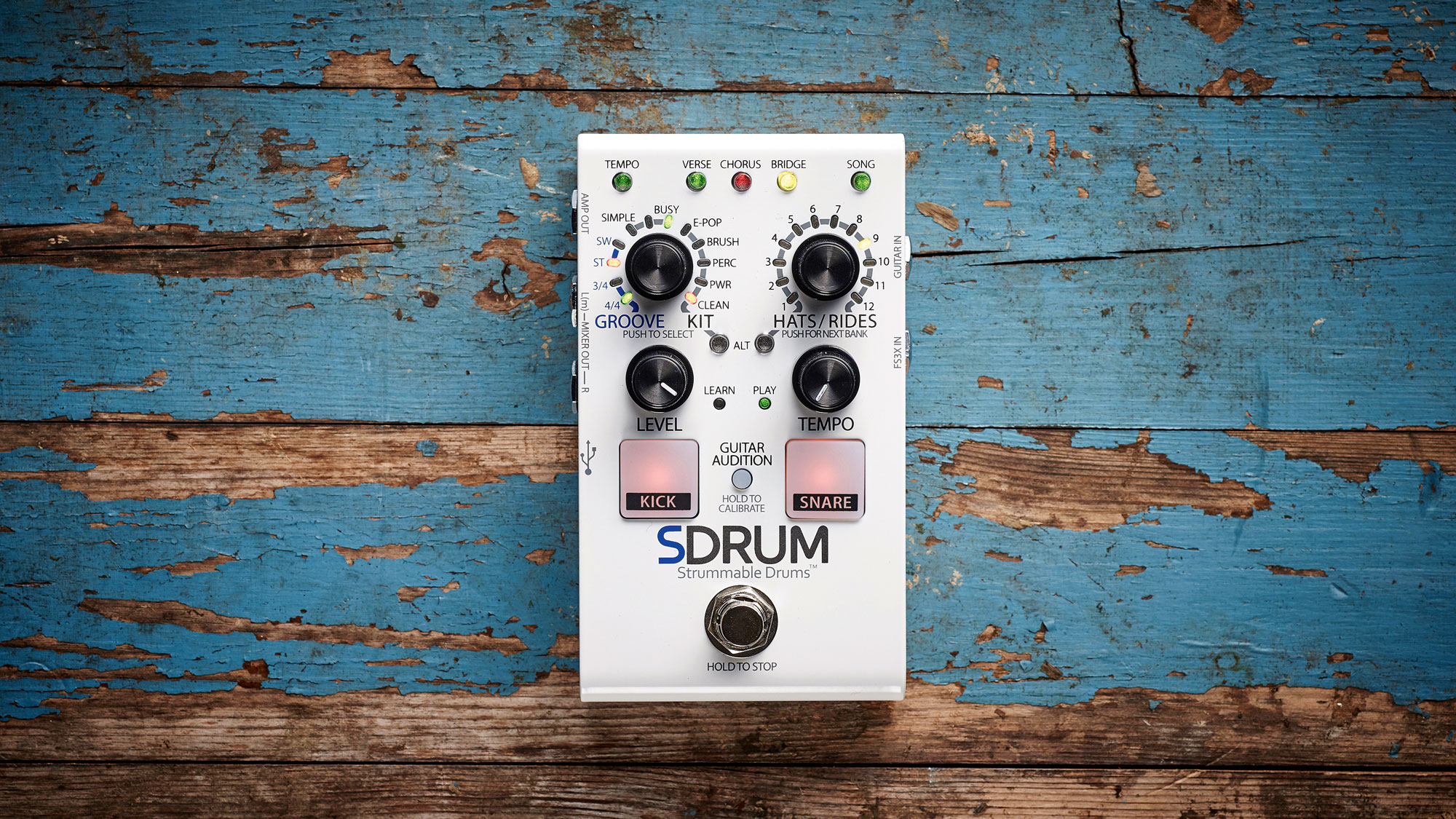Guitar World Verdict
The DigiTech SDRUM takes the tedium out of programming drum parts that sound exactly the way you want them to by making it easy to perform kick and snare parts from a guitar’s strings – and the pedal itself makes it easy to control those patterns during live performance.
Pros
- +
Create drum patterns by strumming muted low and high strings.
- +
Automatically generates editable drum parts.
- +
Stores up to 36 songs each with 3 switchable sections.
- +
High-quality drum and percussion sounds.
Cons
- -
Operation/programming requires studying the manual.
- -
Reverb processing cannot be bypassed.
You can trust Guitar World
DigiTech calls the SDRUM a “strummable drums” pedal, but that’s really only a small fraction of what this powerful device can do. The second sentence of the manual’s intro section offers the more accurate “intelligent drum machine” description, but DigiTech probably didn’t use that to avoid making drummers feel insulted by a device that possibly could be smarter than them. [Rimshot crash]
One could also call SDRUM a “drum machine for dummies” (hence its unique “strummable” programming feature for guitarists) as it automatically programs hi-hat, cymbal patterns or tom/percussion parts that complement the kick/snare patterns input either by using the pedal’s kick and snare pads or strumming muted low (kick) and high (snare) strings on an electric or acoustic-electric guitar or bass.
The end result is complete drum patterns that sound like something a real drummer would play, saving guitarists considerable programming time and hassles.
SDRUM provides a solid variety of highly realistic sounding drum samples with multiple velocity layers and nuanced variations. Five different drum kits are accessible (E-Pop, Brush, Percussion, Power and Clean), and each kit offers alternate kick and snare sounds.

Drum sounds are internally processed with Lexicon reverb. Users can create songs with three different parts (verse, chorus, bridge) that can be switched during playback with the footswitch. The pedal stores up to 36 songs.
SDRUM’s features and capabilities are quite deep, so users will need to read the manual a few times to figure out how to program patterns and perform with it. Although it’s not initially intuitive, once one has worked through the process a few times it quickly becomes second nature.

Mono Amp Out and Stereo Mixer Out jacks enable a variety of setup configurations, and an auto-sensing feature automatically optimizes sound quality depending on which outputs are used. For example, if only the Amp Out is used, special equalization is engaged on the drum signal to optimize sound quality through a guitar amp.
All the latest guitar news, interviews, lessons, reviews, deals and more, direct to your inbox!
For the best sound quality and flexibility, I recommend using both the Amp Out and Mixer Out jacks together, which isolates the guitar signal to the Amp Out and the drum signal to the Mixer Outputs.
The drum sounds are quite good and are suitable for many solo artists or small performance combos as well as for recording demos. Because individual sounds can’t be isolated and are always processed with reverb, SDRUM may not be as well suited for more sophisticated recording productions, but that’s not really what it was designed for anyway.
Specs
- PRICE: $349 / £329
- TYPE: Drum machine pedal
- FEATURES: E-Pop, Brush, Percussion, Power, and Clean drum kits;
- CONTROLS: Groove/Kit, Hats/Rides, Level, Tempo knobs; back-lit buttons for Tempo, Verse, Chorus, Bridge, Song, Alt (Kit), Alt (Hats/Rides), Guitar Audition; pads for Kick, Snare
- CONNECTIONS: Guitar In, FS3X In, Amp Out, Mixer Out L(m), Mixer Out R, JamSync Out, USB
- POWER: 9V DC, 500 mA
- CONTACT: DigiTech
Chris is the co-author of Eruption - Conversations with Eddie Van Halen. He is a 40-year music industry veteran who started at Boardwalk Entertainment (Joan Jett, Night Ranger) and Roland US before becoming a guitar journalist in 1991. He has interviewed more than 600 artists, written more than 1,400 product reviews and contributed to Jeff Beck’s Beck 01: Hot Rods and Rock & Roll and Eric Clapton’s Six String Stories.


